Wondering how to weigh your travel trailer or 5th wheel? Where can you do that? Should you even try on your own? And what do these figures even mean for towing your rig? RV expert Gary Brinck contributed this helpful guide on the topic.
Weighing your trailer is an important step toward safe and comfortable RVing. You actually need to know the weights before you buy so you can be sure your tow vehicle can safely and comfortably tow the trailer. That can be done using the max weight (GVWR) as an estimate. You also need to know the gross (total) weight and the portion of that weight which is carried on the axles & wheels. Finally, you need to know the portion of the weight carried on the hitch.
The Weight On The Hitch (Tongue Weight)
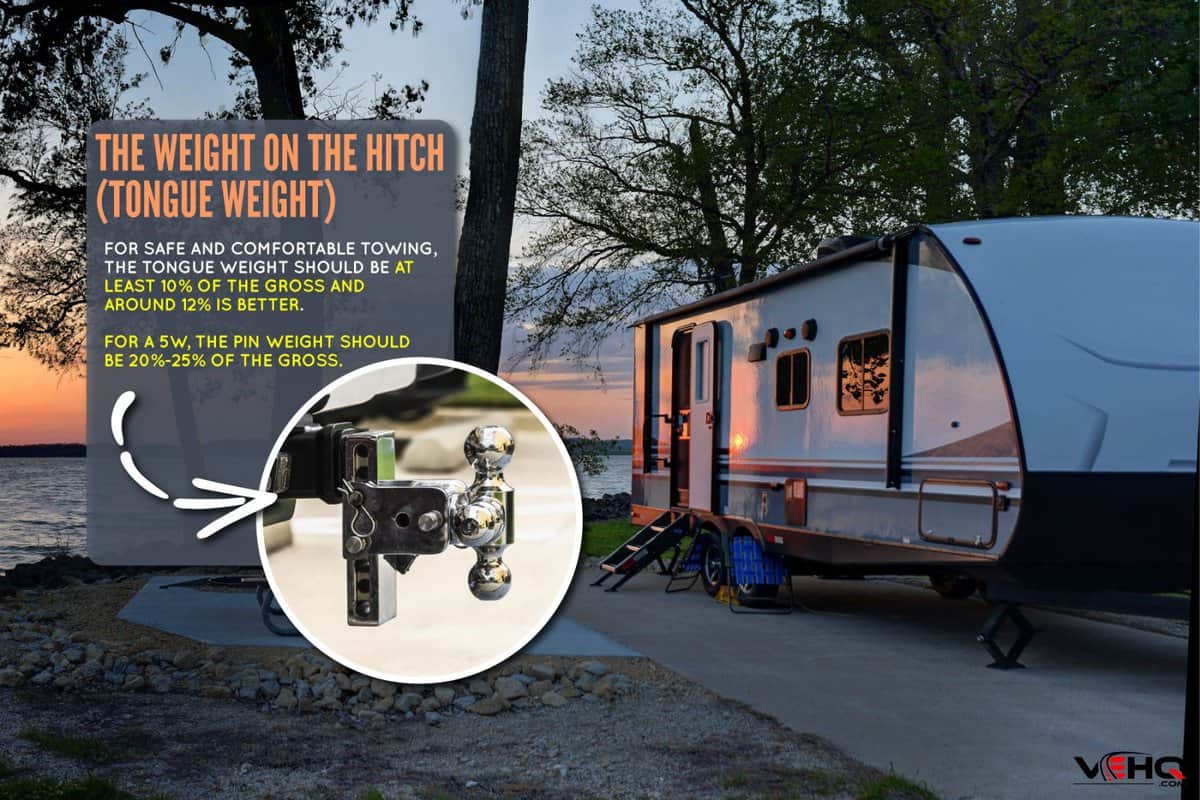
The weight on the hitch is called tongue weight on a travel trailer and pin weight on a fifth wheel (5W). Proper tongue or pin weight is crucial to avoid trailer sway as well as bucking or porpoising.
For safe and comfortable towing, the tongue weight should be at least 10% of the gross and around 12% is better.
For a 5W, the pin weight should be 20%-25% of the gross. Because the 5W pin weight is large, it is wise to make sure it doesn’t overload the truck rear axle limit (Rear GAWR).
Another reason for knowing your trailer weights is tire loading and pressure. Every tire has a maximum load (weight) it can carry and that weight depends on adequate air pressure (tire psi). You want to be sure the tires can carry the axle weight and have enough air pressure to do so.
Every tire has its design maximum embossed on the sidewall along with the psi needed to handle that. Knowledge of the weight carried per axle and per tire is a critical factor in setting the psi to avoid blow-outs. If you don’t know your weights, always use the psi specified for maximum tire load capacity.
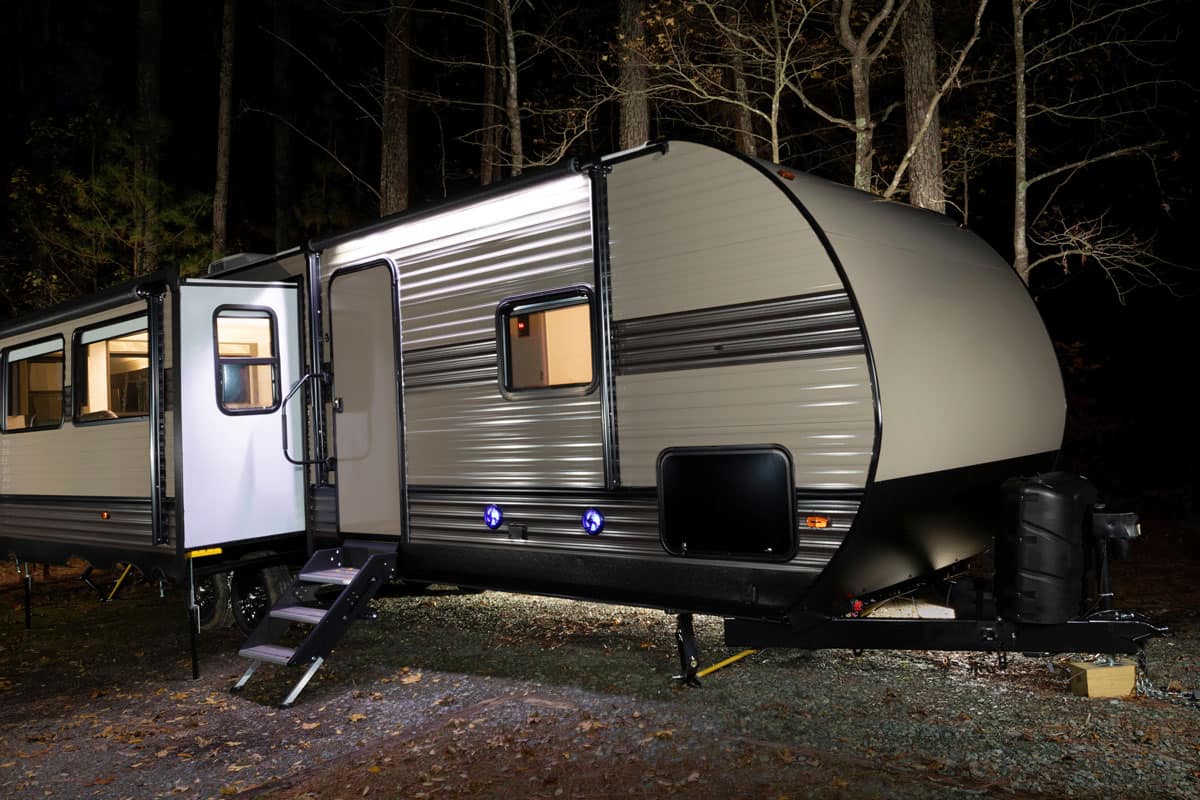
Are you legally required to weigh your travel trailer?
Some RV owners worry about getting stopped by police for being overweight but private-use vehicles are not subject to inspection for weight maximums and are not required to enter highway scales. However, they are subject to the weight restrictions on bridges, so you need to know your gross weights for that as well.
Where to get weighed?
Many truck stops have a Certified “CAT” scales because commercial vehicle weights are strictly regulated. RVers are welcome to use those scales and the fee is modest, usually $10-$20.
Tell the weighmaster that you don’t need a certified weight receipt and that usually saves a few dollars. If there are trucks waiting to use the scale, be courteous and don’t dally; get your weights and get out of the way. CAT scales are actually multiple scales in one, usually three segments so that they can capture 3 weights in one pass. That makes the job much easier.
There are often other places to get weighed, sometimes even for free. Many trucking businesses have scales because they charge or pay by weight. Examples are sand & gravel yards, grain elevators, moving van companies, fertilizer & feed companies, etc. Call around and ask. These companies often have single scales (one weight at a time), so you have to make multiple passes over the scale to get separate weights for tow vehicle, axles, and combined gross.
How do you actually weigh a travel trailer?

The objective is to obtain these weights:
- The combined weight of tow vehicle and trailer
- Weight of tow vehicle only
- Total weight of trailer only
- Trailer tongue or pin weight (carried by the tow vehicle)
- Trailer axle weight
For a 5th Wheel trailer, you should also get separate weights for each axle on the tow vehicle so that you can be sure front & rear tire pressures are correct and that the rear axle isn’t overloaded.
It is important to do the weighing with the tow vehicle and trailer loaded as they are for normal travel. That means all passengers, gear, fuel, water, and propane onboard in their normal places, in both truck and trailer.
Travel trailer, Single Platform Scale
On a single platform scale, all the above five weights can be done with just three weighs and some arithmetic. The procedure is:
First weigh the entire rig, with both the trailer and tow vehicle on the scale. This will get you the combined vehicle weight. Call this weight A.
Next, move the tow vehicle so its rear axle is barely but completely off the scale. Leave the trailer tongue jack or 5W landing gear still over the scale. Signal the weigh-master to capture that weight. This will be the weight of the trailer less the tongue or pin weight that is still carried by the tow vehicle. Call this weight B.
Without moving the rig, uncouple the hitch and use the jack or landing gear to lift the trailer off the ball or hitch plate. (If you have a weight distributing travel trailer hitch, you need not release the springbars, their weight will be trivial and evenly split between truck and trailer.) Now weigh the trailer. This will be the actual trailer weight since the hitch weight is no longer supported by the tow vehicle. Call this weight C.
Hitch up and move off the scale so that others can use it. Go inside, pay your weighing fee, get your weigh sheet, and you can leave. However, you may want to do the arithmetic below first, in case you want to make some adjustments and do another weigh-in.
These calculations will give you the data you need:
A = combined vehicle weight. Compare this with tow vehicle GCVWR.
C = trailer weight. Compare this with trailer GVWR.
C - B = tongue or pin weight. It should be no less than 10% of trailer weight for a conventionally hitched travel trailer or 20% for a 5W. It should not exceed the weight ratings of your ball, ball mount, or receiver.
A - C = tow vehicle weight. Compare this to the tow vehicle GVWR.
Want to know which Travel Trailer are the lightest? Check this out!
Fifth Wheel, Single Platform Scale
Weighing a 5W is the same as a travel trailer except for two additional weights that will enable you to determine the impact of hitch pin weight on the rear axle of the truck may well be of concern. The two are taken before you take the A weight above.
When you pull onto the scale, stop and take the weight with just the front wheels of the truck on the scale. We will call this weight D, the weight on the front axle. Now move the rear wheels of the truck on the scale and take the weight with both the front and rear axles on the scale. This weight E, the weight of the front plus the rear axle weights (the total weight of the tow vehicle). With one additional subtraction, calculate the weight on the truck rear axle:
D = front axle weight. Compare this with the truck’s GAWR for the front axle.
E – D = rear axle weight. Compare this with the truck GAWR for the rear axle.
Multi-Platform Scales
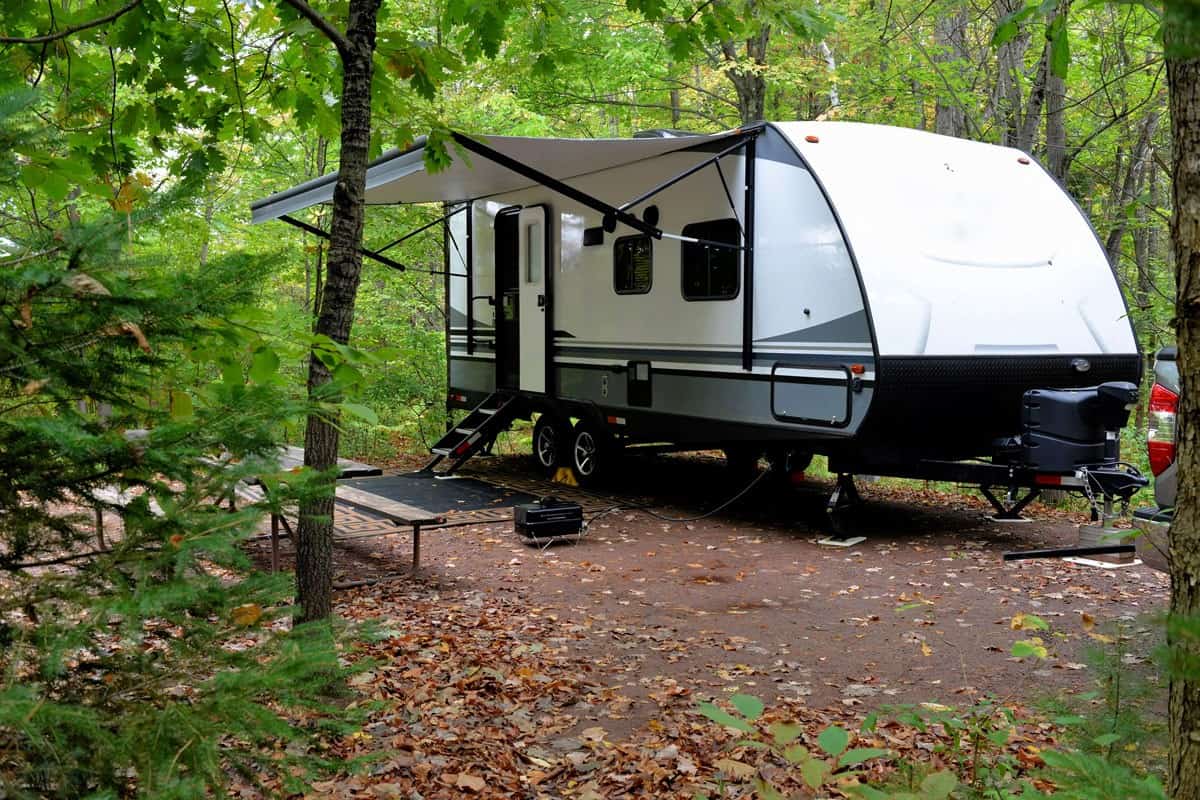
The folks at CAT Scales have excellent instructions and a video showing how each type of RV and vehicle can be weighed on their 3-segment multi-platform scales. These are essentially three separate scales laid end-to-end, allowing you to drive on and get 3 weights at once. Since the weighmaster is often located some distance from the scale, it will have an intercom near the front left side for you to communicate.
Tell the weighmaster ahead of time that you have an RV trailer and need to do a second weigh-in. The weighmaster should be familiar with this but discuss in advance so you are both on the same page.
Drive the tow vehicle and trailer onto the scale, positioning so that the tow vehicle front axle is on one scale segment, the tow vehicle rear axle on the second segment, and the trailer axles on the third segment. Tell the weighmaster to capture those 3 weights, which we will call J1, J2, J3.
You will then need to drive off the scale, unhitch the trailer somewhere on the lot, and return to the scale for an additional weight with the tow vehicle only. This is necessary to get the trailer tongue or pin weight. The tow vehicle can be positioned all on one segment or across two segments.
If all on one, we will call that weight M. If on two, call them M1 & M2 and add them together to get weight M. The weighmaster may be willing to call this additional weight a “re-weigh”, which is only a few dollars additional.
J1 = Tow vehicle front axle, including partial tongue or pin weight. Compare to tow vehicle front axle GAWR
J2 = Tow vehicle rear axle, including partial tongue or pin weight. Compare this the tow vehicle rear axle GAWR
J3 = Trailer Axle weight. Compare this to the combined trailer axle GAWRs.
M = Tow vehicle weight without trailer
J1 + J2 = Tow vehicle weight with trailer tongue or pin weight
(J1+J2) – M = Trailer tongue or pin weight
(J1 + J2 +J3) – M = gross trailer weight. Compare this to trailer GVWR
Here's a list of awesome Travel Trailers under 6000 lbs.
Got my weights, NOW WHAT?
Now that you have your tow vehicle and trailer weights, you can determine the minimum and optimal tires pressures and evaluate the balance & loading of your vehicles.
Tire pressures are adjusted according to the weight carried by the tire. Using the axle weights for your vehicles, divide by the number of tires per axle to get an average load. The weight may not be exactly even on both ends, so assume one side is 5-10% higher than the average. Use the tire manufacturers load inflation tables to determine the minimum tire psi for that weight. Most owners choose a somewhat higher psi to allow for future increases or other changes. All the tires on the same axle or pair of axles should be at the same pressure.
Evaluating vehicle load & balance is simple
Compare each actual axle weight to the axle GAWR, which will be found on a placard on the driver door post or the left front corner of the trailer. For the tow vehicle, use the rear axle weight with the trailer hitched. Then compare the combined axle weight for each vehicle to the vehicle GVWR, which is also on the weight placard. Last, compute the tongue or pin weight as a percentage of the trailer weight.
For a travel trailer, the tongue weight should be a minimum of 10% of the actual loaded trailer weight to minimize trailer sway. 12% is better. For a fifth wheel, the pin weight should be a minimum of 20% of the trailer weight but 25% is better. The Tongue or Pin weight is adjusted by Balancing The Trailer, which will be discussed more below.
There are several websites that will help you evaluate towing weights. You enter your vehicles weight ratings and the actual scale readings and the results are tabulated for you. Check out sites such as these:
https://www.huskytow.com/towing-calculator/
http://changingears.com/rv-sec-calc-trailer-weight-tt.shtml
http://changingears.com/rv-sec-calc-trailer-weight-fw.shtml
https://www.fifthwheelmagazine.com/new-tow-calc.aspx
Balancing The Trailer's Weight
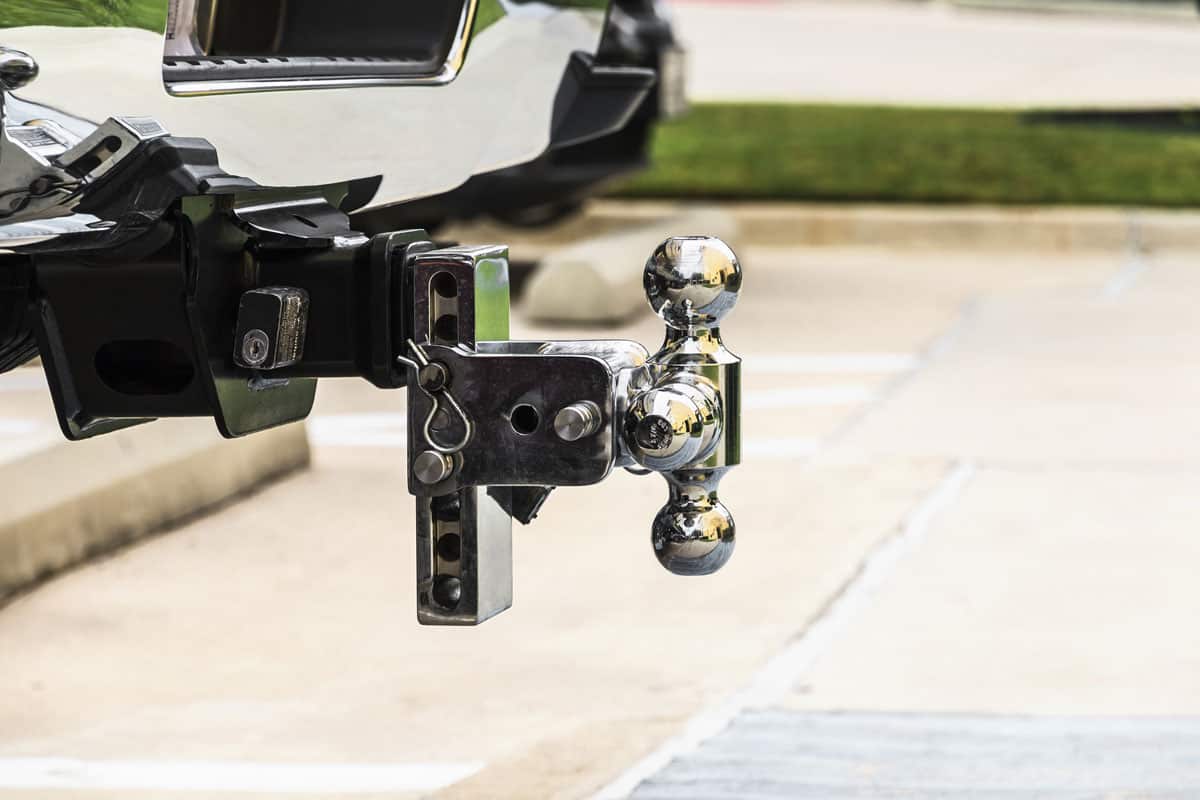
Balancing a trailer means shifting weight forward or back with respect to the trailer axles, which act as the fulcrum of a teeter-totter. Because the force exerted by an object is its weight multiplied by the distance from the fulcrum(axle), items at the very front or rear can have a major effect on the balance. What you can move and how far, therefore, depends heavily on the layout of your trailer, what gear you carry, and the water tanks.
Some trailers have storage areas at the very back or front, making it tempting to load those with items that may be heavy, e.g. tools, firewood, extra beverages, etc. Other trailers may have small storage spaces scattered around and you may not have a lot of options on where to put things. Sometimes you have to get creative to solve a balance problem.
A trailer that was well-balanced at the dealer may become nose or tail heavy once you load it up. Further, the amount of gear you carry tends to grow over several trips – there is always just one more thing you need! Moving gear, or simply leaving it home, can adjust the balance quite a bit.
Water is heavy, 8.4 lbs/gallon. It’s wise to always carry some water, just in case, and of course necessary if you will camp at a place without any water available. The location of the trailer water tanks is critical if you carry much water. If the tanks are over the axles, extra weight has little or no effect on balance, but if the tanks are forward or behind the axles, the effect can be profound.
In case you shift weight around or decide to carry full water tank instead of a few gallons, it may be wise to re-weigh the trailer to see how the balance has changed. If the tongue or pin weight has become too low, you can find yourself with a trailer with very poor towing manners, swaying or bucking every mile.
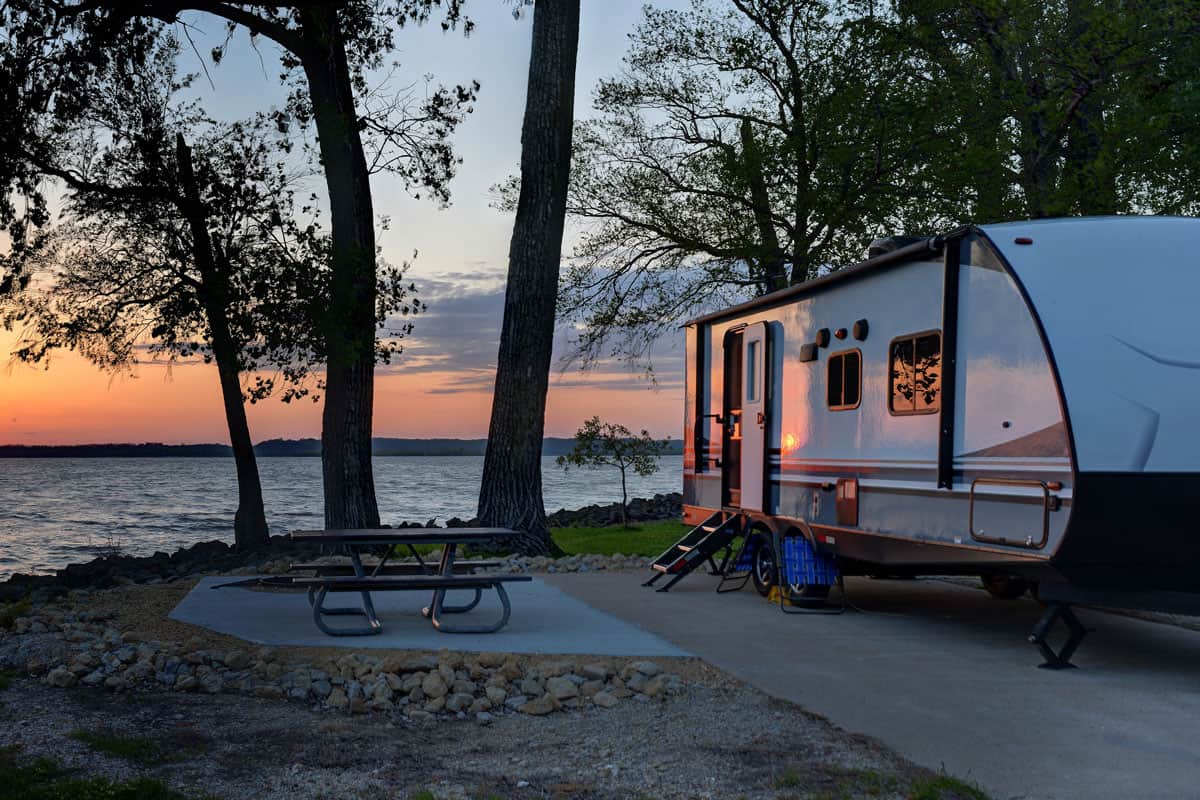
Gary Brinck has been camping and RVing for 30+ years and has owned everything from pop-ups to Class A motorhomes. He is active on multiple RV sites, a long time staff member at RVForum.net (over 60,000 topics posted!) and has authored several RV-related articles for magazines and websites.
Here are more info you should know about Travel Trailer:
15 Travel Trailer Towing Tips Every Driver Should Know
How Much Does It Cost To Transport A Travel Trailer?
Towing Capacity And Trailer Weight – What RV Owners Need To Know
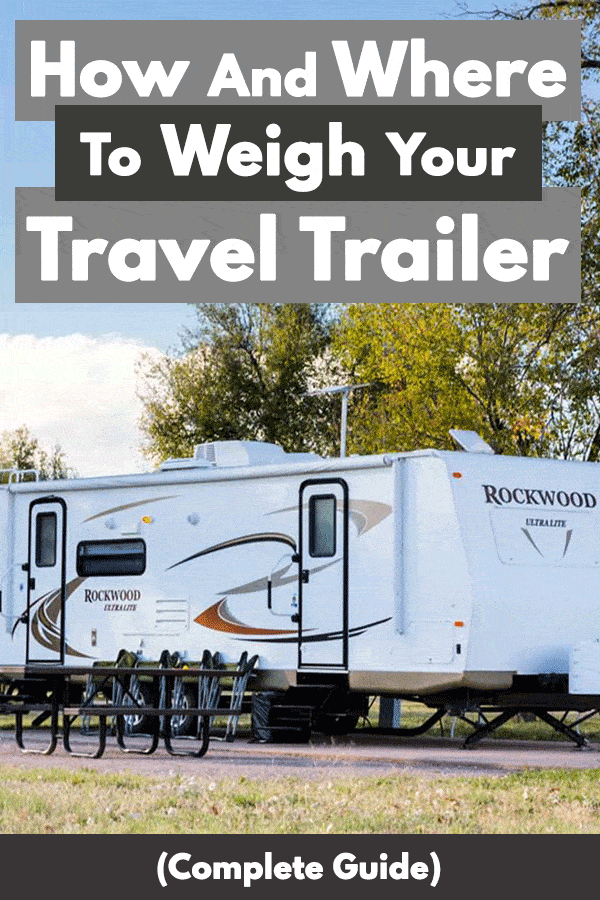

should I weigh the truck.trailer using the WDH ? or without? to get the proper tongue weight etc?
@Larry M, With. Most travel trailers will exceed the tongue weight rating of the vehicle without it. Adjusting the amount of tension (distribution) on the spring bars will decrease weight on rear axle of tow vehicle and front axle of trailer (more tension) or increase (less tension). Additionally more tension decreases tongue weight, decreased tension increases tongue weight. It is important to ensure that none of the maximum weight ratings of all three are exceeded.